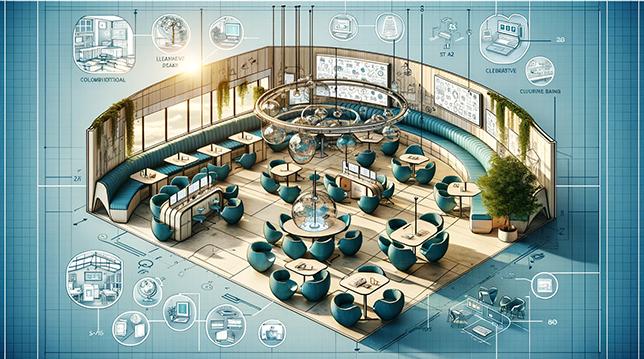Hybrid Classrooms: Essential Strategies for Flexible and Effective Learning Spaces
As education continues to evolve in the digital era, hybrid classrooms have emerged as the answer to the call for flexibility, engagement, and inclusivity. By blending traditional in-person instruction with innovative online learning, hybrid classrooms create a dynamic environment adaptable to varied learning needs and situations. In this article, we explore essential strategies for building effective hybrid classrooms, highlight their key benefits, and share actionable tips and real-world examples to help educational institutions and educators thrive.
What Are Hybrid Classrooms?
hybrid classrooms, also called blended learning environments, combine face-to-face teaching with online components to facilitate interactive and flexible learning. This format empowers educators to engage students nonetheless of their physical location while fostering collaboration and effective knowledge sharing.
- In-Person Component: Offers real-time classroom interactions and hands-on activities.
- Online Component: Supports asynchronous access to course materials, discussions, and assessments.
Benefits of Hybrid Classrooms
Hybrid learning spaces offer numerous benefits for both students and educators:
- Flexibility: Learners can engage with content at their own pace and according to their schedule.
- Inclusivity: Accommodates diverse learners, including remote or geographically distant students.
- Improved Engagement: Varied instructional methods appeal to different learning preferences.
- Efficient Use of Resources: Combines digital tools with classroom infrastructure for optimal results.
- Scalability: Easily adapts to growing class sizes or institutional needs.
- Enhanced Collaboration: Digital platforms break down walls, encouraging greater participation and teamwork.
Essential Strategies for Creating Effective Hybrid Classrooms
Building a successful hybrid learning environment requires intentional planning, thoughtful technology use, and a student-centered mindset. Here are key strategies to ensure flexible and effective hybrid classrooms:
1. Prioritize Clear Communication and Consistency
- Set Expectations: Define participation guidelines for both in-person and online learners from the outset.
- Centralize Information: use a Learning Management System (LMS) to share schedules, resources, assignments, and feedback.
- Regular Updates: Communicate regularly with all students to keep everyone informed and engaged.
2. Leverage Technology Thoughtfully
- Integrate Interactive Tools: Utilize platforms like Zoom, Microsoft Teams, or Google Meet for live lessons and breakout groups.
- Asynchronous Support: Offer recorded lectures, discussion forums, and quizzes for flexible participation.
- Accessibility Considerations: Choose tools with options for closed captioning, screen readers, and easy navigation.
3. Design Engaging Lessons for All Learners
- Blend Synchronous and Asynchronous Learning: Combine live sessions with self-paced activities to maximize engagement.
- Active Learning: Incorporate polls, group discussions, collaborative documents, and peer feedback.
- Worldwide Design: Craft lessons to suit visual, auditory, and kinesthetic learners.
4. Foster a Connected community
- Group Projects: Assign mixed modality teams (online and in-person) to encourage interaction.
- virtual Office Hours: Offer regular opportunities for online and in-person support.
- social Spaces: Create informal forums or chat spaces for students to connect beyond coursework.
5. Continuously Evaluate and Adapt
- Gather Feedback: Use surveys or regular check-ins to measure student satisfaction and learning outcomes.
- Reflect and Iterate: Assess what works and refine strategies each term or semester.
- Professional Growth: Encourage ongoing training for educators in hybrid instructional design and technology.
Practical Tips for Managing Hybrid Classrooms
-
Invest in Reliable Infrastructure:
Ensure strong Wi-Fi, quality audio-visual equipment, and backup systems to minimize disruptions.
-
Plan for flexibility:
Prepare choice activities in the event of technical difficulties and allow for multiple ways to submit assignments.
-
Establish digital Etiquette:
Teach students best practices for video calls (muting, using chat, raising hands) and respectful online communication.
-
Emphasize Equity:
Provide technology lending programs or support for students without personal devices or reliable internet.
-
Use Visual Cues:
Incorporate slides, infographics, and real-time whiteboarding to bridge the gap between online and offline learners.
-
Monitor Participation:
Use attendance and engagement tracking tools to identify and support less active students.
Case Studies: Real-World Success in Hybrid Classrooms
1. University-Level Hybrid Learning
At a major U.S. university, the engineering department implemented a hybrid model using Zoom for live streaming and Canvas for asynchronous tasks. Students reported higher satisfaction due to flexible learning options and increased instructor accessibility. Faculty noted greater retention, especially among adult learners balancing work and family commitments.
2. K–12 Blended Learning Success
A public school district piloted hybrid classrooms by alternating student attendance days and providing online lessons on off days. teachers received professional development on digital tools, which increased student engagement and improved test scores across several subjects.
3. International Collaboration
an international high school partnered with schools abroad to deliver joint hybrid lessons. This allowed students to collaborate with peers from different countries,enhancing cultural exchange and developing 21st-century skills.
First-Hand Educator Experiences: Overcoming Challenges
Teachers entering hybrid classrooms often face initial challenges, from navigating technology to managing dual modes of instruction. Though, many educators have found creative solutions:
- Peer Support: Forming teacher learning communities to exchange tips and troubleshoot problems.
- Student Leaders: Appointing tech-savvy students as “digital ambassadors” to support classroom logistics.
- Iterative Betterment: Adopting a mindset of continuous growth, viewing each semester as an opportunity to refine and innovate.
As one teacher shared, “Hybrid teaching challenged me to rethink how I connect with students — but it’s made me a far better, more responsive educator.”
Conclusion: embracing the Future of Hybrid Learning
The shift toward hybrid classrooms represents a pivotal opportunity for educators and institutions to expand access, personalize learning, and foster meaningful engagement. By adopting essential hybrid classroom strategies—prioritizing communication, leveraging technology, designing inclusive activities, and remaining adaptive—schools and universities can create flexible and effective learning spaces that prepare students for success in an ever-evolving world. Whether you are just beginning your hybrid journey or looking to optimize an existing approach, continuous reflection, training, and community support are key to reaping the full benefits of the hybrid classroom revolution.
Ready to transform your classroom? start integrating these strategies today, and watch as your learning environment becomes more dynamic, accessible, and impactful than ever before.

